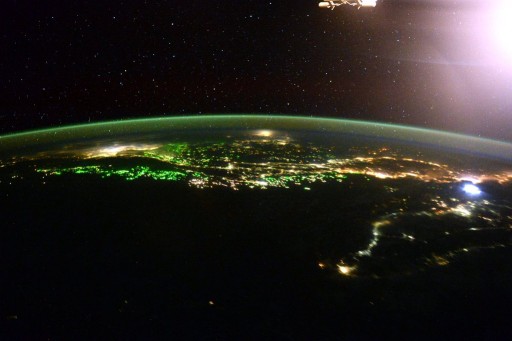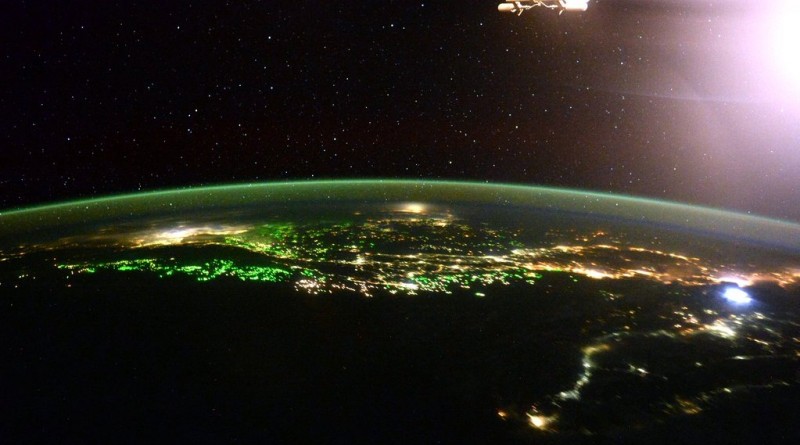ISS Operations Update – January 6, 2016

Experiments:
Fluid Shifts Sample Collection [Fluid Shifts Before, During and After Prolonged Space Flight and Their Association with Intracranial Pressure and Visual Impairment. Known as the Fluids Shift study, this experiment is one of the most complex integrated experiments ever performed on ISS using pieces of US and Russian hardware to attempt to quantify the amount of fluid shifting from the lower body to the upper body when transitioning from a gravity to a microgravity environment. This will also lead to an understanding of effects of the fluid shift on fluid pressure in the head, changes to vision and eye structure. Effects on the eye caused by elevated intracranial pressure include globe flattening, choroidal folds, and alteration of the optic nerve.]
Biological Rhythms 48 Hours [The BLR48 and Circadian Rhythms Study will examine the role of synchronized circadian rhythms and possible maintenance during long-duration spaceflight and addresses the impacts to crew members’ health and wellbeing. Understanding how the dark/light cycle and sleep shifting affects circadian rhythms and with that the performance of the crew members will enable scientists to develop new sleep shifting techniques for crew members in space and shift workers on Earth.]
Dose Tracker [Dose Tracker uses logs kept by crew members on the frequency of medication intake before, during and after a mission also with regards to side effect qualities frequencies and severities. This data is needed to address theories of medication ineffectiveness during flight and unusual side effects experienced in the flight environment.]
Pilot-T [This experiment puts crew members through complex tasks, such as piloting a space vehicle, at various stages of a long-duration mission to assess crew member performance reliability over long mission durations.]
Integrated Resistance and Aerobic Training Study (Sprint) [This study evaluates a high-intensity, low-volume exercise protocol to minimize the loss of muscle, bone and cardiovascular function but also minimizing the time spent with daily exercise. To asses the protocol, crew members conduct regular measurements of VO2max, heart rate (HR) response to submaximal exercise and ventilatory threshold. Monthly ultrasounds of the thigh and calf are used to evaluate spaceflight-induced changes in the muscle volume. Post-flight data on muscle and bone mass is compared to pre-flight measurements and to data from control subjects that use the regular exercise protocol.]
KPT-10 – Kulonovskiy Kristall Hardware Setup & Experiment Ops [The KPT-10 telescience study examines “dynamic and structural characteristics of the Coulomb systems formed by charged dispersed diamagnetic macroparticles in a magnetic field (trap), investigating the following processes onboard the ISS RS (Russian Segment): condensed dust media, Coulomb crystals, and formation of Coulomb liquids due to charged macroparticles,” the NASA experiment overview notes.]
Maintenance/Systems:
Nominal Inspections/Servicing Tasks (Morning Inspection, Caution & Warning Panel Check, Sozh System Maintenance) (Russian Crew)
Kubik-6 Incubator: Powerup for testing after electronics box changeout yesterday
Russian Treadmill Failure: The БД-2 rubber shock absorbing belt was torn, rendering the treadmill non-operational as no spare is available onboard. Russian crew members will receive training on the T2 treadmill on the U.S. Segment for regular training until spare parts can be delivered to ISS.
Depressurization of Kibo Airlock in preparation for Robotic Refueling Mission Ops: Retrieval of Task Board 4 from ELC-4.
Service Module Ventilation System Preventive Maintenance
ARED Flywheel Cylinder Evacuation
Other Activities:
EVA Preparations – Resizing of EMU #3008 for Tim Peake and #3011 for Tim Kopra in preparation for next Friday’s Sequential Shunt Unit Replacement EVA.
EMU Preparations: Elimination of gas from water reservoir, EMU water tank recharge, tether inspection
Robotics: The Dextre Robot continued reconfiguring tools and adapters on Robotic Refueling Mission Task Board 4 which was then removed from the RRM payload in preparation for its transfer to the Kibo Airlock Slide Table along with SPDM Robot Micro Conical Tool 1 to be returned to Earth.
Audit of Docking and Internal Transfer System Components

